About My Culture
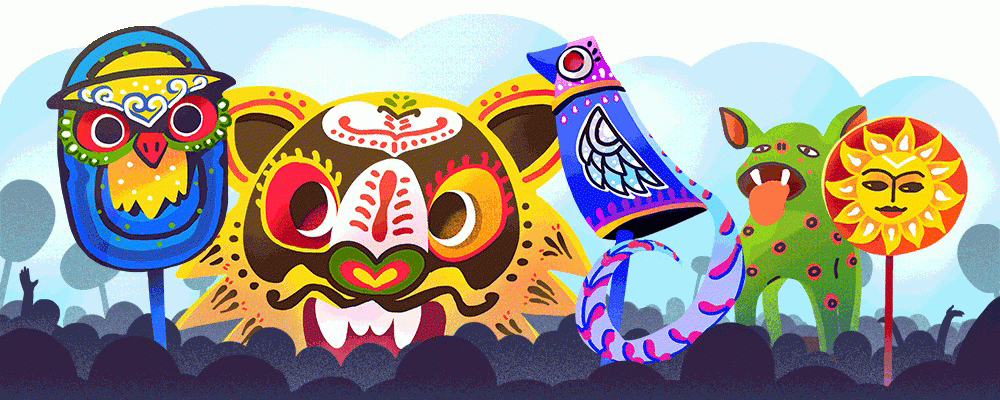
What is your cultural topic?
Bangla Happy New Year Paola Baishakh or Pahela Boishakh (the first month of Bengali calendar) was the first day of Bangla calendar,The Bangla New Year. The day is celebrated with a special festival as the Happy New Year in Bangladesh and West Bengal of India. Bengalis living in Tripura also participate in this festival. As a result, it is a universal festival of Bengalis. All the Bengali people from all parts of the world enjoy a new year on this day, trying to forget, all sorrow and misery in the past year. Everyone wishes that the new year is rich and happy. Different levels of businessmen welcome this as an opportunity to start a new business. According to the Gregorian calendar, April 13 or April 15, Pahela Boishakh is celebrated. There is a similarity in this regard in any modern or ancient calendar. Every year on 14th April this festival is celebrated in Bangladesh.
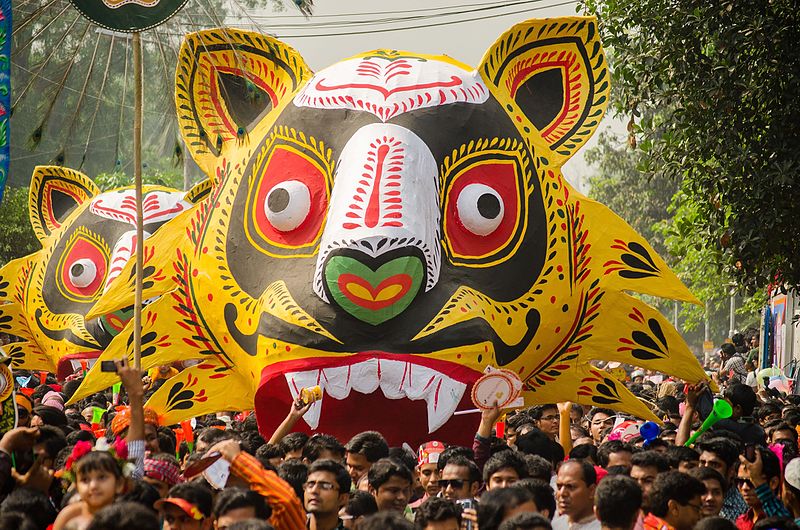
According to the modern calendar set by the Bengali Academy, this day has been specified. On this day, all government and non-government organizations in Bangladesh and West Bengal are closed.
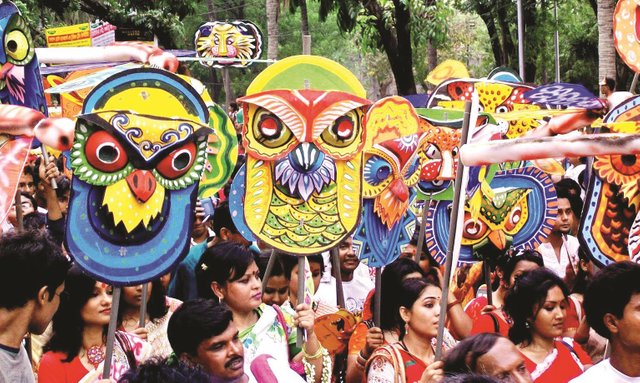
The basic difference between Hijri and Christianity with the Bengali calendar is as the Aijara moon and the Christian year of the clock. For this reason, the new date of hijri begins in the evening, in the coming of new moons. The English day starts midnight. The first day of Baishakh starts from 12 noon, starting from sunrise, there are many disagreements about it; Traditionally, from the sunrise to the Bangla day counting, but the Bangla Academy from 1 Baisakh of 1402 canceled this rule and started counting day at 12.00 to keep it in line with international norms. The rules were introduced.
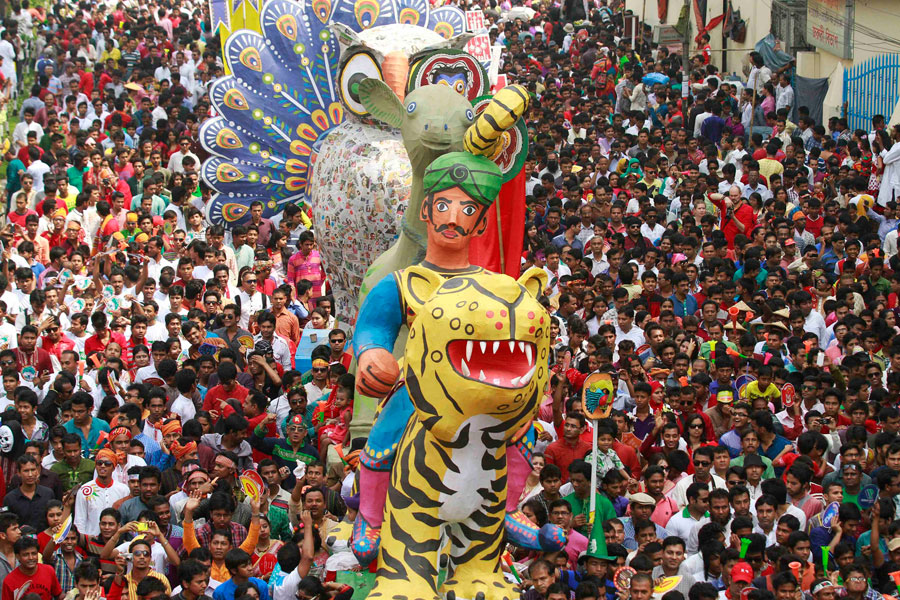
History:
Why did your choose it?
According to the Hindu solar calendar, Bengal was celebrated twelve months ago. This solar eclipse begins in the Gregorian calendar in the middle of April. On the first day of the Hindu solar year, Assam, Bengal, Kerala, Manipur, Nepal, Orissa, Punjab, Tamil Nadu and Tripura were celebrated as an integral part of the culture for the first time. Now as the New Year has become a celebrated festival celebrated for the new year's inauguration, Was not there. Then the Bengali Happy New Year or Pahela Boishakh was celebrated as Arayush festival or seasonal festival. Then its main significance was farming. Since the age of technical application did not start, the farmers had to rely on the season.
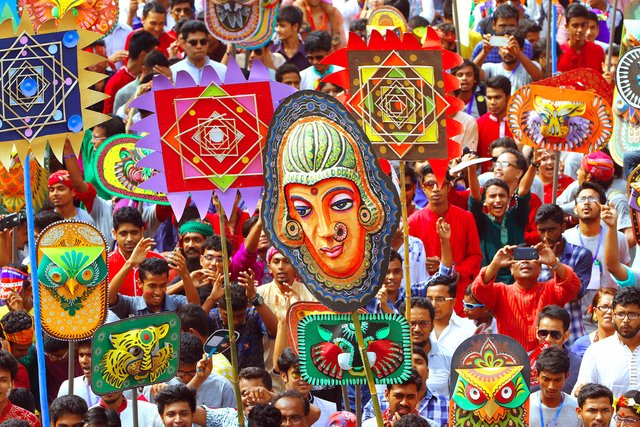
After the establishment of the Mughal Empire in India, the emperors used to pay tribute to agricultural products according to the Hijri calendar. But since Hijri Sun is dependent on the Moon, it does not meet the agricultural yields. This forced the farmers to pay salts to Assamese farmers. Mughal emperor Akbar introduced Bangla to achieve the right to pay rent. He originally ordered to bring reforms in the old calendar. According to the order of the emperor, the renowned astronomer and thinker of Bengal, Fatehullah Siraj, built the rules of new Bengali based on solar and Arabic hijri. The counting of the Bangla calendar began from 10th March or 11th March 1584. However, the counting system was implemented from Akbar's ascension (5 November, 1556). The name of this name was first known as Krishni Son, later Bangad or Bangla Year.
The festival of Pahela Baishakh began from the time of Akbar. Then everybody had to pay all the rent, fees and taxes in the last day of the month of Chaitra. The day after that, land owners of Pahela Boishak used to celebrate the residents of their respective regions with confectionery. Different festivals were organized on this occasion. This festival is turned into a social event, which has been transformed into the present stage. During this time, the main event of this day was to create a Halhata. Halhata is meant to be a new account book. Actually, the process of officially updating the shops' accounts on the first day of Halkat is Bengali. In the village, city or commercial area, at all places, new account books are opened by closing old year's accounts books. Shopkeepers celebrate their customers on the day of Halhuti. This practice is still very common, especially in gold stores.
The news of the celebration of the modern New Year was first available in 1917. In order to win the victory of the British during the First World War, arrangements were made to celebrate and celebrate the first year of Baishakh. Then in 1938 similarities were reported. Later, in 1967, the practice of the first Baishakh celebrations did not become very popular.
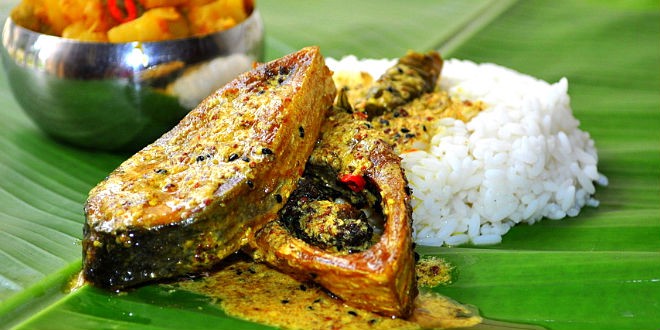
Bangladesh celebrates Happy New Year or Pahela Baishakh:
What makes it special to you and your local culture?
Intensive communication with the culture and culture of the rural population with the New Year festival. People in the village wake up early in the morning, wear new clothes and go to relatives and friends to visit the house. The houses are cleaned and arranged fairly well. There is also special dietary arrangement. Boishakhi Mela is organized in the open areas of some villages, on the open ground. There are many different types of eateries for marketing, there are several banana pools organized. In many places, there is a provision for eating pita rice with hilsa fish. An old culture of this day is organizing rural sports competition. It includes boat raising, stick play or wrestling. The biggest event of this wrestling in Bangladesh is 12 in Baishakh, Chittagong's Laldighi Maidan. This is known as Jabber's play game.
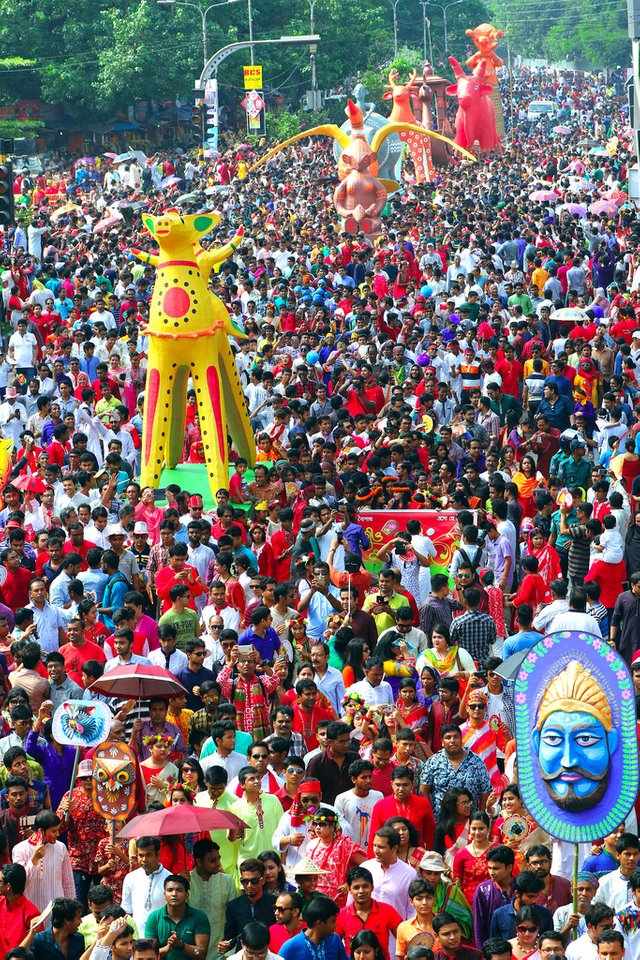
The New Year called the sun through the music of Chayanat, a center of the main festival of Pahela Baishakh in the capital city of Bangladesh. With the sunrise of Pahela Baishakh, the artists of the chayontan call together for a new year by singing them together. Although the place is known to be a bit root, the fact that the stage is created in the shade of trees is not bot, In the 1960s, the start of this year's Chayant festival was held in protest of the persecution and cultural terrorism of the Pakistani ruling regime from 1967.
March rally:
A mandatory organ of Baishakhi festival in Dhaka is a mandatory rally. At the initiative of the Fine Arts Institute of Dhaka University, this procession was completed in the morning on the first Baishak, after completing various roads in the city and finishing again at the Fine Arts Institute. In this procession, rural life and climate of Bengal were highlighted. People of different age groups of all walks of life participate in the procession. No color-shaped masks and replicas of different organisms for the rally. Since 1989, this mahal procession is one of the attractions of the festival of Pahela Boishakh.
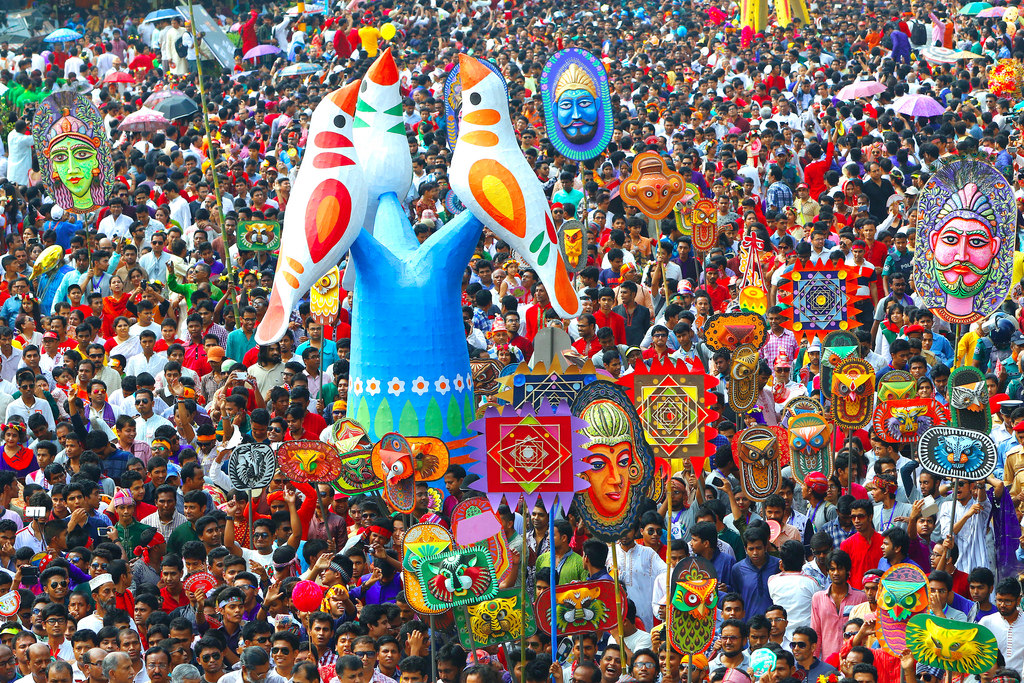
Wife fair:
Isha Khan has an exceptional fair in Sonargaon, whose name is 'Bommela'. The idea of people from the village of jairampur, which started in Paa Baishakh for almost 100 years, has been held for five days. The fair is held under a banyan tree, although traditional religious people gather here as Pujo of Siddheswari Devi. Especially the virgins, the bride, even the mothers, come to the fair and worship them in hopes of fulfilling their exhilaration. Fans offered seasonal fruits with Sandesh-Sweet-Rice Drought. The practice of the pile is also old. It's going to change the old offerings. Now people want to get the message of peace by blowing doves and kapoti, from devotees goddess Who can tell the person's wish to seek the desired people in Boomaal or the prayers of the Gandhi-romans, who do not have it?
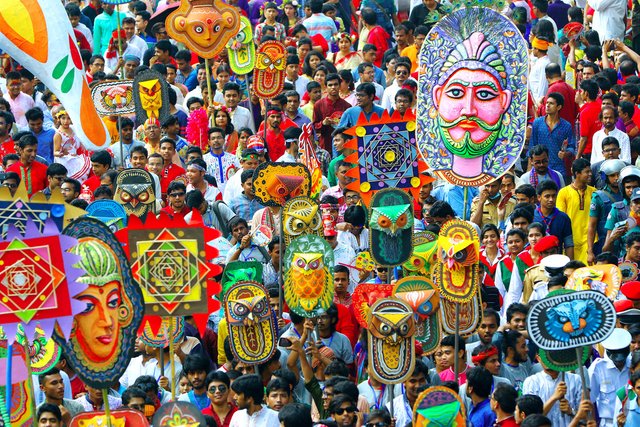
Horse Riding:
Apart from this, another fair was held beside the village of Parab village of Sonargaon Police Station. It's called Horse Riding. A man named Jamini Sadhak, popularly known as a man, used to ride on horseback on this day of the New Year, and after his death, his monument was built at that place. In the monastery of Pahela Baishakh every year, the traditional religious people keep the clay horses and the fair is organized here. For this reason, the common name of the fair is called Ghoramela. The attraction of this fair is that the khichuri is cooked in the boat and all the elderly-elderly people eat it with kalapata joyously. From the morning people came to this place. Children are eager to come from the morning to come to the fair. One day the fair was accumulated since noon. Thousands of people meet. Although the fair was organized due to traditional religious people. Nevertheless, people of all religions have the prevalence of this fair. Children and adolescents are more in the fair. The fair is organized in Nagaradola, doll dance and circus. Kirtan is added to the new dimension to remove the fatigue of the fair when the western sky is very tired when the people of the sky are very tired, when the sky is celebrated in different colors. This is a tradition that is till midnight. Thus, this traditional fair of Baishakh ends.
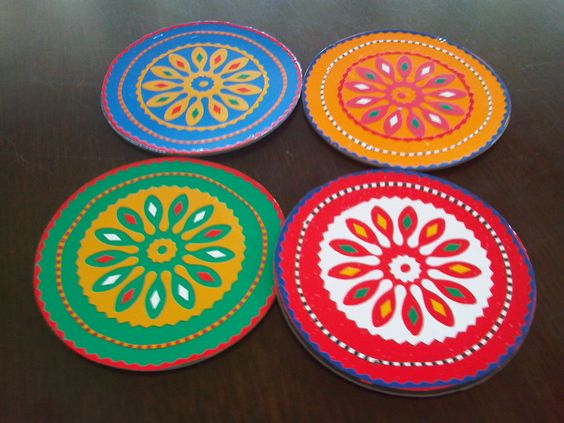
The anniversary of Chittagong:
The main center of the festival of Pahela Boishakh in Chittagong port city, DC Hill Park. For organizing the Combined Cultural Alliance here, two days of festivities are organized to celebrate the year of festivity and to celebrate the new year. In addition to the cultural programs on the free platform, as well as the fashions of some of the most popular products. There are also panta hilsa arrangements. In 1973, 1974 and 1975, the efforts of political parties to celebrate Pahela Boishakh jointly in Chittagong. The event was organized at the foot of the Ispahani Mountains. In 1978, this festival was moved to DC Hill Park in present day. Wahidul Haque, Nirmal Mitra, Mihir Nandi, Arun Das Gupta, Abul Momen Subhash Dey were involved in the 1978 initiative. Initially, a group of two teams from each organization were formed. The squad used to perform composite music. Since 1980, organizations have started distributing aromas separately. Later, after the group theater coordination council was added, the drama was also joined. In the regular other places of the city, there is a three-day long festoon of child organization Falakir, which ends on the first day of Baishakh. There is an annual fair in the female association school in the city.
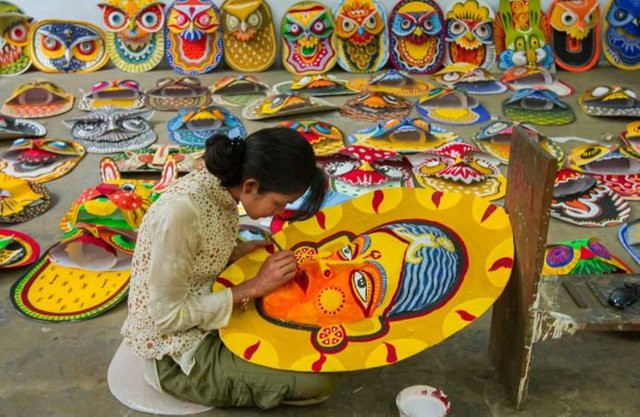
In the Hill District, the indigenous anniversaries:
The Chittagong Hill Tracts area has three major minorities, each of which has a festival on the new day of the year. Boishu of Tripura, Marmad Sanghri and Chakmas Biju festival At present, three nationalities together celebrate this festival. The name of this festival is called Vaisabi. There are many aspects of the festival. One of these is the water festival of the Marma.
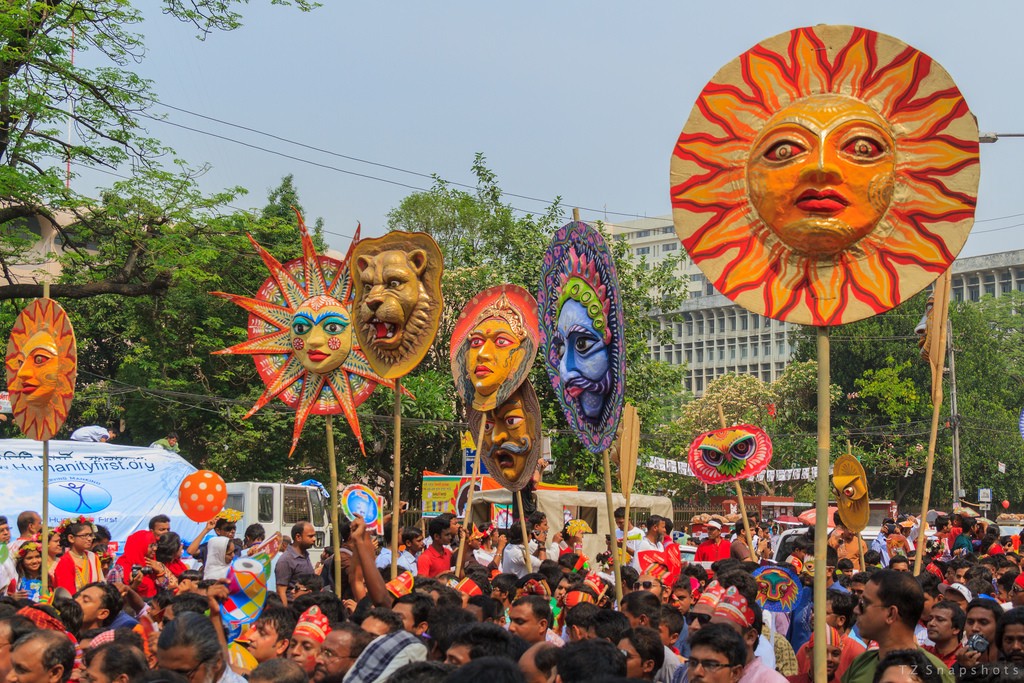
West Bengal celebrates Pahela Baishakh:
The festival is celebrated in West Bengal on the occasion of Bangla Navbharashi Puela Baishakh. On the first day of Bangabandir, with great enthusiasm and enthusiasm, the anniversary ceremony is held in whole of West Bengal. All of us are delighted to welcome the new year, tied together the rural and urban life of Bengal. Sara Chaitra goes on throughout the month to prepare for the festival. On the last day of the month of Chaitra, the day of Chaitra Sankranti or the festival of the season is celebrated as Charkpuja, the worship of Shiva. On this day, the sun will leave the zodiac sign and enter the Aries. On this day, Chadak Mela was organized in different areas of rural Bangladesh. Participants in this fair entertain people by displaying various physical activities. Apart from this, the symbolic tradition of excluding all acrimony and acidity of relationships by eating food and tea consonants in many families also exists in the 21st Century. The next day, that is the tradition of bowing to bathing in each family of Paola Baishakh. Breakfast at home and in all business establishments. Most of the businesses have opened new accounts for their business accounts since then, whose clothing name is Halhata. Boishakhi Mela starts from the Baishakh on the outskirts of the city and the outskirts of the city of Kolkata. This fair is held throughout the month of Baishakh.
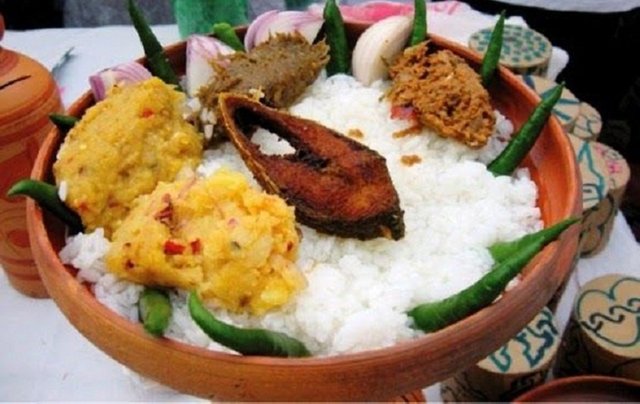
Calcutta:
India's cultural capital, is playing a key role in celebrating Boishakh. On the occasion of Navabarsha, various activities of the city are organized in the streets of the city. In the last year's Chaitra month, many discounts are offered on the purchase of most stores in the city, whose current name is 'Chaitra Cell'. So, on the occasion of Paola Baishakh and all the people of Calcutta purchase new clothes, etc., regardless of the economic status to take advantage of this discount. On the day of Paola Baishakh, in the famous Kalighat temple in Calcutta, with a significant crowd. There are many traders waiting for the morning to worship Goddess and start Halhata. Apart from businessmen, many households also went to Kalighat to pray for the blessings of the goddess, wishing for the good of the family. Traditional traditions of Bangali traditional wear dhoti-punjabi and sari are available on this day.
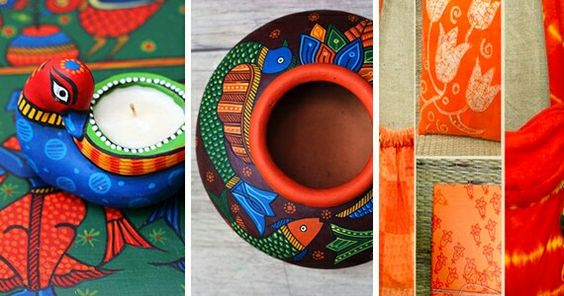
Baishakh in other countries:
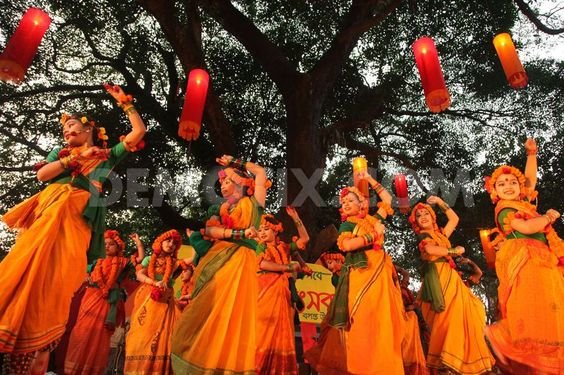
In addition to Bangladesh and India, the first Baishakh is celebrated in many other countries of the world.
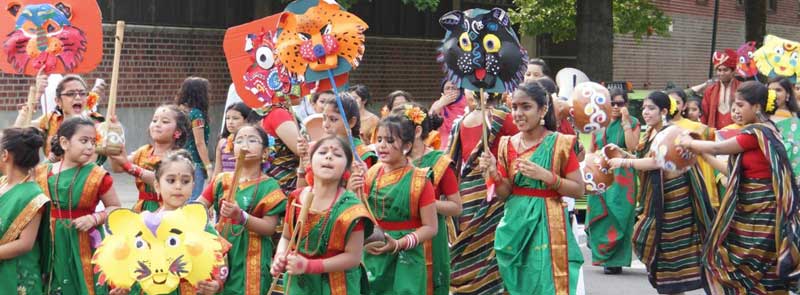
Australia:
Pahela Baishakh is celebrated in different cities of Australia such as Sydney, Melbourne, Canberra through Boishakhi Mela. People of different classes made this trend of Bengali culture delightful by dance-music-fashion show food. The largest Baisakhi fair is held in Sydney, Australia. Although Barnup Girls is held in high school, the fair is being held in Sydney Olympic Park since 2006. [A large number of people meet in the fair and this is a happy day for expatriate Bengalis.
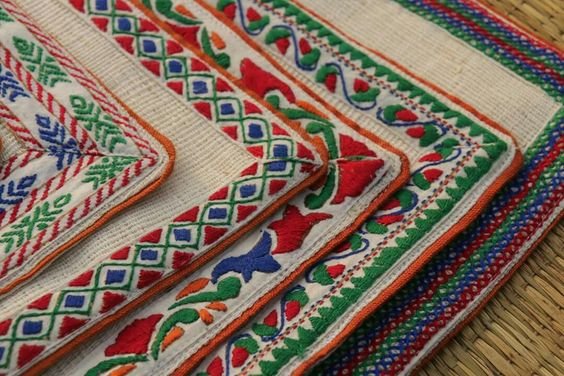
Sweden:
First Boishakh was celebrated with great enthusiasm in Sweden.
England:
The expatriate Bengalis who live in England observe Street Festival (Path Festivals). This festival is held in London. The largest Asian festival held in Europe, and the biggest Bengali festival except Bangladesh and India's West Bengal.
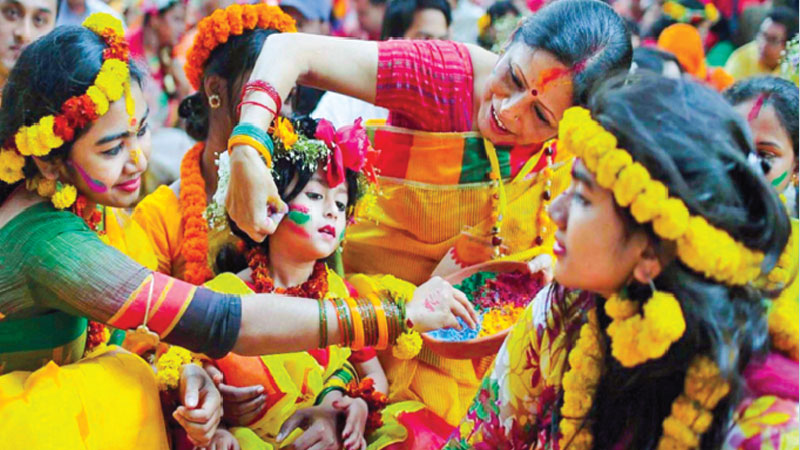
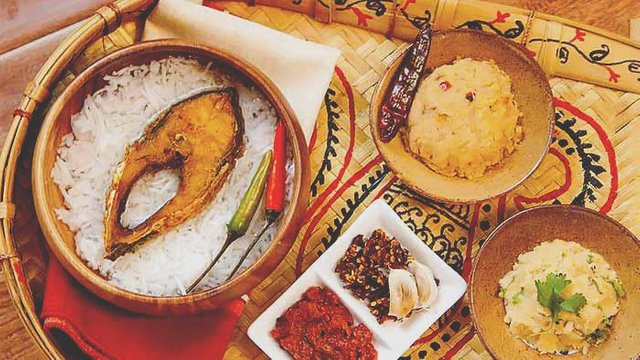


Now that looks amazing 😉👊🏽
Beautiful article my friend.
Congrats on getting through the challenge, I enjoyed your cultural experience. Eye-opening!
Congratulations @tetas08! You have completed some achievement on Steemit and have been rewarded with new badge(s) :
Click on any badge to view your own Board of Honor on SteemitBoard.
For more information about SteemitBoard, click here
If you no longer want to receive notifications, reply to this comment with the word
STOPDo not miss the last announcement from @steemitboard!
Congratulations @tetas08! You received a personal award!
You can view your badges on your Steem Board and compare to others on the Steem Ranking
Vote for @Steemitboard as a witness to get one more award and increased upvotes!